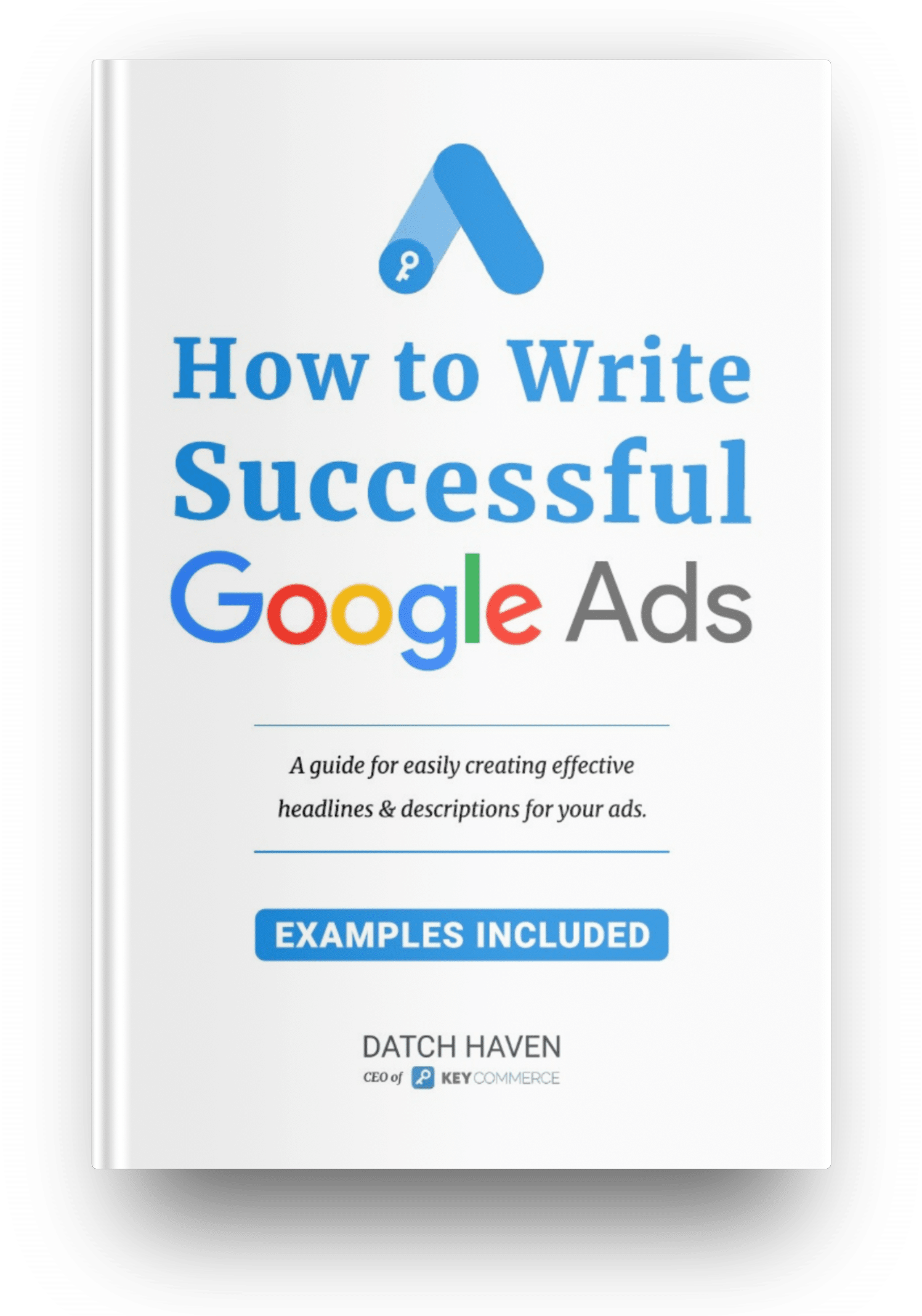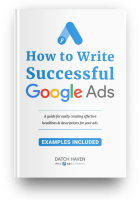Suppose you are selling health and beauty products. You have a clean site and excellent products. You choose to run Google ads since your site is still new. So, you target people searching for ‘skincare products.’ That’s a broad term, right?
Since you placed a high bid on that keyword, you noticed a significant increase in traffic after a while. However, sales are fewer.
What could be the problem?
It’s simple. All this time, you were conscious of getting traffic. Little did you take the time to figure out your customers’ search intent.
Most probably, they didn’t get the product they were looking for, or they were merely searching for information about beauty but found out your site, which didn’t appear to solve their challenge.
Such cases happen more often. Don’t aim to rank for many keywords and forget all about the ‘why’ behind the search.
What’s search intent?
It’s the main goal a user has when he enters a phrase into the search bar. It’s the results you expect when searching for a product or brand.
What does the person searching for ‘best skincare products’ expect?
Is he different from someone searching for ‘where to buy skincare products?’
Yes, the latter intends to buy while the former wants to learn. Until you master the search intent behind people clicking your Google ads, you will have fewer conversions.
Why is search intent crucial to PPC marketing success?
Here are some benefits of considering search intent in your marketing:
- Enables you to create relevant content
You should always look beyond the search intent. See the keywords that your customers input into the search bar as an individual thought process.
Every time your customer searches for ‘the best sports shoes’ or ‘best mix grinder,’ he expects results. He will always choose to click on links or Google search ads that appeal to him most in the search results.
If you understand why your customer is searching for ‘how to skate,’ you will create content that solves the challenge.
You can offer a pdf or ebook that solves the challenge of skating and give it to the customer. Since you will have solved that problem, he will trust you. The money is in the trust.
Therefore, you can’t begin creating content without understanding the real search intent of your customers. If you jump the gun, they may not buy from since you are targeting the wrong people.
Are you aiming to create a landing page? The content will only be relevant to your audience if you take the time to understand their intentions for searching your services in the first place.
- Direct your budget to where you can get a high ROI
To get the best ROI from your Google PPC ads, you need to know the most profitable terms to bid on. You don’t merely spend your hard-earned cash on a campaign you don’t understand, do you?
Take, for example, Elio Nappa. She sells hair and other beauty products. She has found out that most of her customers are searching for
‘How to straighten hair naturally.’
‘Best hair products.’
‘When to apply hair moisturizer.’
What do you think she needs to do?
Simple;
Elio needs to filter out less performing keywords and create a list of keywords with low or medium competition to bid on.
Once she understands the keywords with the highest conversion rates, she will just launch a Google ads campaign and place a high bid on those keywords.
The result is that she will target profitable customers who are willing to buy her products.
- Boost page views
If a person is interested in a coffee maker, searches for ‘best coffee maker,’ and finds a Google ad that meets his search intent, he will most likely click on that link and check out more.
If one lands on your site and finds the content relevant, more will follow suit. Google has a way of showing relevant content and ads to users based on their search intent.
Therefore, if you can understand the search intent and create targeted offers, you can rank your blog content and get targeted traffic faster.
How does it affect your e-commerce Google Ads?
Search intent has a lot to do with the success of your Google campaigns.
Here is how:
1. Enables you to create a targeted ad copy
Before you craft a compelling Google ad copy, you need to understand why someone would click on your ad in the first place.
Check out this Google ad from Namecheap:
The intention was to check out companies that provide ‘web hosting for e-commerce.’ That was the search intent. Did the ad present that precisely?
Yes. Let’s analyze:
The title: The title contains the keywords ‘web hosting for e-commerce’ the title itself will draw you in since you needed an e-commerce site precisely.
Freebies: No one will fail to love free things because there is no risk involved. So, if you can get a free website builder, free SSL certificates for your site, and free site data backups, you will quickly compel your prospects to take the offer.
Different options to choose: you have different options to weigh before choosing one that suits you.
Discounted offer: a discounted offer will always inspire you to make the jump.
Search intent will enable you to craft a winning Google ad copy. The tone of the copy should resonate with the challenges your audience is facing.
2. Reduce bounce rates
Your content marketing aim should not always be getting traffic. You may get 1,000 people per day into your site but zero sales.
The trick is to get targeted and conversion-focused traffic. Target people with the most definite intention to buy your products and services.
A high bounce rate indicates people are clicking your ads, but spending less time on your sales pages because they are not interested in your products.
Your Google ads may be ranking for the term ‘shoes,’ but the people are interested in something else or merely researching and have no intention of purchasing. The result is spending more and getting less.
How can you reduce your bounce rate and attract the right people?
Understand their search intent. If you know what they need, you will customize your offer to that.
3. Boost conversions
Imagine running Google Ads without understanding your customers’ search intent. You don’t merely bid on any keyword. There is a lot involved.
The tricky part of any Google ads campaign is not only understanding the search intent but also aligning the search intent to the products and services you are offering.
The moment you consider the two aspects, you will boost sales conversions. If people search on Google and get the search results they wanted, what would prevent them from purchasing? They may not buy the first time, but they will someday.
Understanding search intent will enable you to present the right products to your customers and boost conversions.
Understanding the right intent + Giving them correct results + Positive user experience = Lots of conversions
4. You can identify opportunity gaps fast
By researching your customers’ search intent, you can identify profitable keywords that your competitors are not bidding on.
Understand the following factors if you are to uncover new keyword targeting opportunities:
- Search volume: You need to know the size of the audience a particular keyword harbors. If fewer people are searching for it, why target it?
- Keyword difficulty: Some search terms are difficult to rank because of stiff competition. Choose keywords that aren’t as competitive.
- SERP: there are essential SERP features such as maps, reviews, videos, or ads. Each element will influence how you organize your pages. Optimize your content around each feature.
- Current ranking pages: If your competitors have explainer videos in their posts, you need to include them as well.
By studying these factors, you will know the keywords you can target. You will also understand what your competitors are not doing.
If you notice that you can outrank your competitor by creating more relevant and targeted content, fill that gap.
How to identify and leverage search intent for business growth
Now that you know the benefits of understanding search intent for your PPC campaigns, how can you uncover the search intent of your customers?
You see, no matter the price you bid on those keywords, the search intent matters more. It’s what determines if the web visitor will make a purchase.
There are low and high intent keywords
There are two types of search intent keywords based on their profitability. They can either be high or low profitable keywords.
High intent keywords are also called commercial intent keywords because they represent a segment of customers who are actively willing to purchase or inquire about your products.
You can categorize all search intents into either transactional, informational, or navigational. High intent keywords are often transactional since they harbor a huge purchasing power.
Don’t bid mostly on low intent keywords because their commercial intent is little. They consist of people either looking for information or searching for a specific website. These search intents don’t often convert right away.
Two types of high intent keywords
Commercial intent keywords also differ based on the action you would want the customer to take. They can either be a ‘product’ or ‘buy now’ keywords.
This is how the two differ:
‘Product’ keywords
Some product keywords include:
- Product-specific keywords
- Best
- Top
- Cheapest
- Affordable
- Product categories such as ‘skincare products’
- A brand name such as ‘Colgate.’
- Reviews
If you think about it, these terms show that someone is ready to buy. At least the search intent of someone checking out for the ‘iPhone 11 review’ is prepared to purchase the product.
Some of these phrases are highly profitable. For example, branded searches such as ‘Oppo A 3S’ are more likely to lead to a sale than ‘best’ or ‘review’ keywords.
Another thing to note is that there are services and product-based search intents. You can’t expect someone to input ‘buy’ for hairdressing services. He will mostly use ‘hire.’
Though ‘product’ keywords are still profitable, some such as ‘review’ and ‘comparison’ will require relevant, targeted, and valuable content. You will also pay more for keywords such as ‘cheapest’ or ‘affordable’ because they are effective for customers searching for products to purchase online.
‘Buy now’ keywords
They include:
- Coupon
- Free shipping
- Buy
- Discount
- Deal
‘Buy’ is the strongest of all because it shows a prospect is highly certain of purchasing a product. All the keywords are action-oriented and aim to hasten the purchase decision of the customer.
By adding incentives such as the one seen in the Namecheap ad above will encourage the prospect to buy.
Identify by Categories of search intent
There are three categories of search intent. Here is the difference between them:
1. Informational search intent
Most people on the internet are looking for information about products or services that matters to them and their businesses.
For example, someone can be searching the following
‘How to repair a broken HVAC system.’
‘What is the best process for developing good habits?’
‘Which is the best PPC Company?’
If you think about it, their search intention is not to buy, but to improve the quality of their lives. They can search for any information that can help to improve their lives.
Most informational search intent contains the following words:
- How to
- Ways to
- What are the benefits of
- Guide to
Check out this example of informational search intent. It basically shows less intention of purchasing something.
The result is a recipe. Notice that the intent was to learn to cook salmon, not to buy.
How to target informational intents
Since their search intention is not to buy, don’t sell to them because you will only be wasting your marketing resources. Instead, give them the information they require and earn their trust. That’s where the money is.
Depending on your niche, you can offer value based on the search intent. You can create the following to drive traffic to your site and remarket to your site visitors.
- A detailed guide around a topic
- A how-to video
- Infographic
- A rich, informative blog post
All the resources above act as top-of-funnel customer acquisition strategies. Their main aim is to attract the customer. Later, you can engage them via emails. Depending on your offers, some will ultimately purchase since they have shown interest.
Check out how HubSpot wrote a whopping value-packed infographic to satisfy the ‘how to sell fast’ search intent.
You can also infuse your informational intent data into your Google Ads campaigns and attract interested audiences.
2. Navigational search intent
This is a more qualified search than information search intent because the person already knows the site. Therefore, he will just type the name into the search bar and hit ‘enter.’
For example, if someone wants to log into his Pinterest account, he will just type ‘Pinterest login’ or simply ‘Pinterest.’
Navigational search intent represents a segment of loyal customers; those who already know your brand and are willing to buy from you.
Navigation search intent can be words like:
- Brand name
- Hours of
- Location of
- Cost of
- Brand login
How to attract navigational search intent
Begin by identifying the most effective search terms your audience is using. Most of these terms are specific and hence might have a limited audience.
Take care to own your navigational term because some brands don’t rank for their navigation search intents. Own all the ‘versions’ such as the different spellings, typos, and brand name adjustment.
Create content around those search terms. The following are types of content you can create to convert navigational search intents.
- Case studies
- Compelling landing pages
- Compelling products and service description
- Webinars
Transactional search intent
These are search intents made by people strongly certain to buy a product. They will input commercial keywords into the browser tab, click ‘search’ and take out their credit card or bookmark the page.
Some of the keywords include:
- Buy
- Order
- Product or brand names such as ‘Coffee price at Starbucks’
Most SEM and Google ads marketers target these keywords because they have high commercial intent. Even though they are expensive, you can still outrank the competitors by doing what they are not doing.
Personalize your ads as much as you can to a segment of highly defined prospects. You can also run RLSA campaigns if you have significant targeted traffic. Read this post on how to do that effectively [link to RLSA blog post]
Transactional search doesn’t always lead to monetary exchange. Targeting those prospects wanting a free trial or creating an account in your SaaS is still profitable.
Instead of relying solely on organic traffic to attract transactional searchers, why not launch Google ads and reap big? Sure enough, organic traffic will help in the long run, but running PPC campaigns is a scalable and straightforward way to drive business leads and sales.
Here is why:
- People clicking on paid search ads have high commercial intent: Most people can’t tell the difference between ads and non-ad pages, but 64.4% of those who click have a firm intention of purchasing.
- They deliver a considerable ROI: commercial search intents are specific. If prospects search for a product and find it out on the first page, why would he bother to check out other pages?
- Your ad can be in different formats: Google ads allow you to include an image of your product. Such that, if someone is looking for it and sees the picture, he will most likely purchase.
How can you target transactional keywords?
There are elements you need to observe if you want to get a larger share of those transactional search intents:
- Craft a compelling ad copy: the Namecheap ad above is a good example. You need to craft one that solves the search intent in short, concise words. Create a compelling landing page, as well.
- Clean design: Your ad copy or landing page shouldn’t be cluttered. Avoid including more words than you have to.
- Offer freebies: reduce the risk by offering freebies to supplement your core offer. Make your customers feel yours is a raw deal, which he has to take.
Begin by gathering the required data about your customers’ transactional search intents. You can then proceed to optimize your products and services around those intents.
Conclusion
Before launching any marketing campaign to attract different categories of search intents, let it be holistic and aligned with your business goals.
It’s worth researching and bidding on keywords that could potentially drive traffic to your site. However, what about the customer search intent? Are your customers satisfied after landing on your website?
You see, it’s one thing to launch ads and attract customers and another thing to make them buy your products. Understand the ‘why’ behind the search and avoid wasting your marketing resources.












